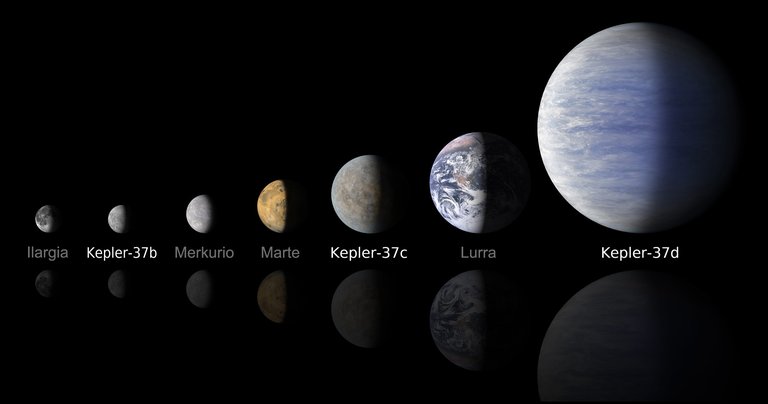Kepler-37b, small exoplanet discovered from astroseismology

The Kepler telescope discovers an exoplanet of only 3,900 kilometers in diameter. It is three times smaller than the Earth, less than Mercury itself and 10% higher than the Moon. It is the least exoplanet detected to date. Precisely, to detect a star of this size around another star, scientists have had to use a technique called astroseismology, that is, they have discovered the exoplanet analyzing the influence of the presence of the planet in the internal activity of the star. The
discovery was published by astronomers at NASA's Ames Research Center in the journal Nature. The small exoplanet, known as Kepler-37b, is in a system with at least two planets, 220 light-years from Earth.
Kepler-37b is very small and therefore difficult to detect. The Kepler telescope detects the passes of the exoplanets, that is, if a planet passes in front of its star seen from Earth, from that star will come less light to Earth during transit. It is a very distant eclipse. And the case of the planet Kepler-37b is a very small eclipse, as it barely prevents the light of the star when it passes ahead. Light intensity drops by only 0.0002% every 13 days.
Measuring this data for four years, astronomers knew it was a very small exoplanet. But what size? To clarify this, it was essential to know the size of the star, the light emitting and therefore the measurement of the planet. The size of the star has been calculated by astroseismology with the help of a team from the University of Birmingham. The
intensity of the light of the star changes not only by the previous passage of the planet, but also by the activity that it has inside, as the Sun changes the spots of the surface. The intensity increases and decreases depending on the star's own frequency, which provides astronomers with information about the size of the star. They are fine calculations based on very small, very sophisticated changes. In short, the luminous waves of the star provide information about the planets around: Kepler-37b and two other planets (Kepler-37c and Kepler-37d).
Thanks to this, the record of small exoplanets is broken. So far, the Martian planet Kepler-42d has had the record, and now the new Kepler-37b, which barely exceeds the size of the Moon.
Buletina
Bidali zure helbide elektronikoa eta jaso asteroko buletina zure sarrera-ontzian











